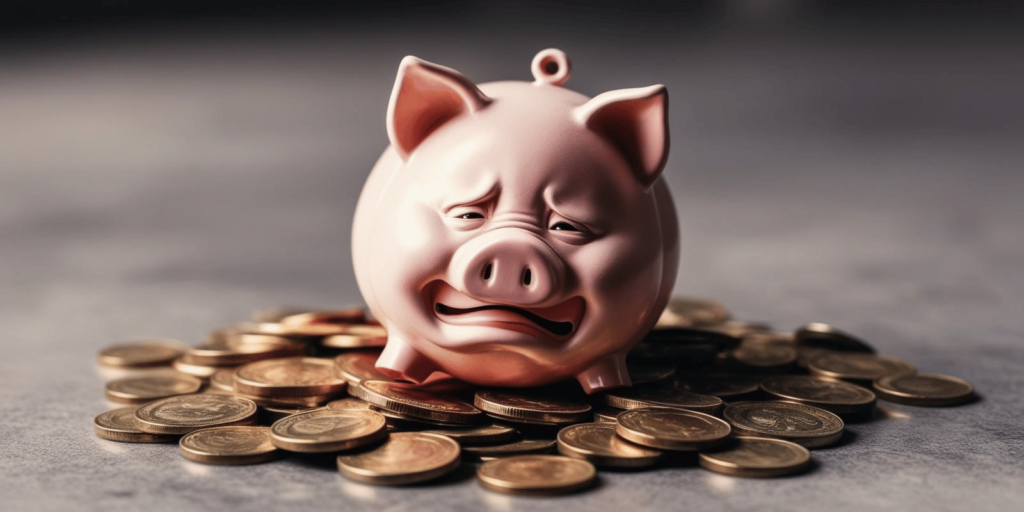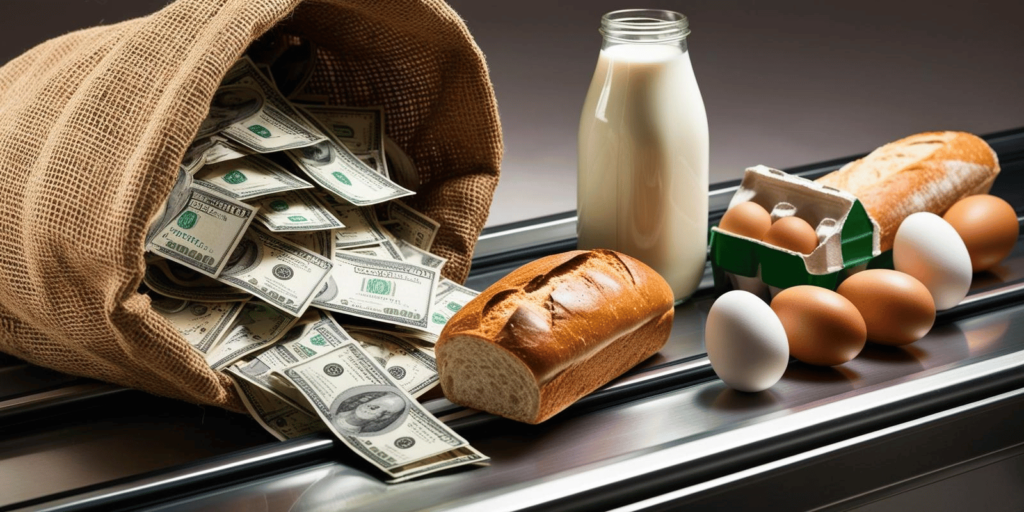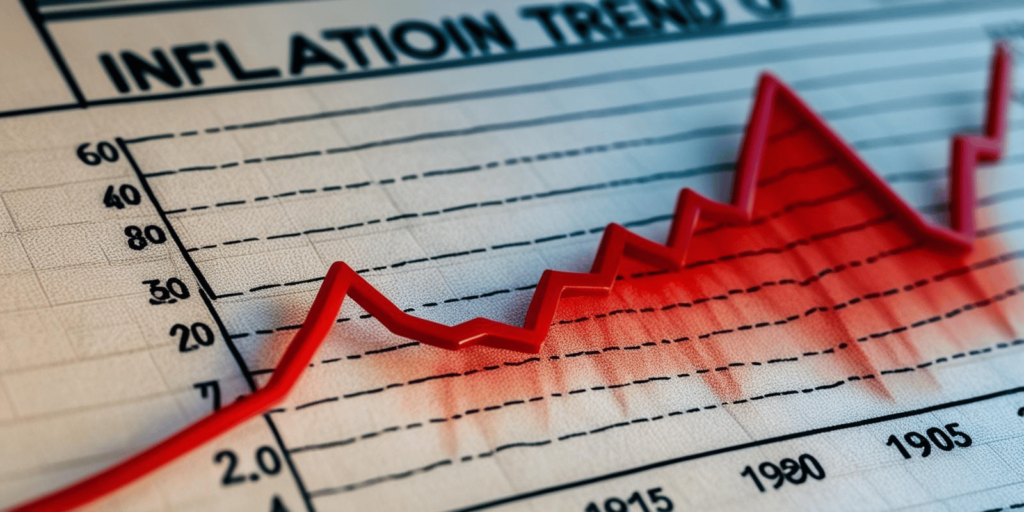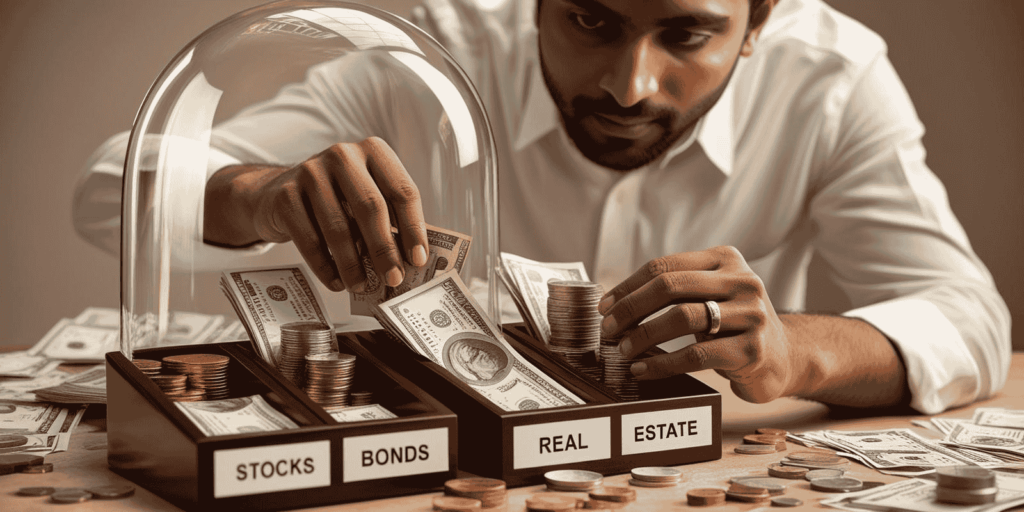Ever wonder what all the fuss is about with this thing called “inflation rate”? It’s been making headlines, impacting our wallets, and leaving many of us scratching our heads. Well, fear not, because I’m here to break it down for you in a way that’s easy to understand, even if you don’t have a PhD in economics (because let’s be honest, who does?!).
What Exactly is Inflation Rate Anyway?
Imagine this: you walk into your favorite coffee shop, ready to grab your usual latte, only to find that it costs a dollar more than it did last week. Ouch! That, my friend, is inflation in action.
In a nutshell, the inflation rate is the percentage increase in the price of goods and services over a certain period, usually a year. It’s like a sneaky little thief that slowly eats away at the value of your money. Think of it this way: if the inflation rate is 3%, then something that cost $100 last year will cost you $103 this year. Not cool, right?
To understand how this number is calculated, let’s dive into a little math (don’t worry, it’s not that scary!). The inflation rate is determined by comparing the price of a basket of goods and services at the beginning of a period to the price of that same basket at the end of the period. This change in price is then divided by the initial price and multiplied by 100 to express it as a percentage.
But here’s a fascinating tidbit: while policymakers aim for a 2% inflation rate, most consumers actually prefer an inflation rate of zero percent! Surprising, isn’t it? It seems we’d all love it if prices stayed the same.
But why should we care about this number anyway? Well, for starters, it affects our purchasing power. Remember that latte? With a higher inflation rate, you might have to cut back on your daily caffeine fix or make some tough choices about where to spend your hard-earned cash.

The Why Behind the What: Causes and Effects of Inflation
Okay, so we know what inflation is, but what causes this economic beast in the first place? Well, it’s a complex interplay of factors, but here are a few key culprits:
- Increased demand: When everyone wants to buy stuff but there’s not enough to go around, prices tend to go up. It’s like that popular toy everyone wants for Christmas – the price is going to be higher because demand is through the roof!
- Supply chain disruptions: Remember those pandemic-related supply chain issues? When there are disruptions in the flow of goods, it can lead to shortages and higher prices. Think of it like a traffic jam on the highway – everything slows down and gets more expensive.
- Government spending: When the government spends a lot of money, it can increase the money supply, which can lead to inflation. It’s like when you get a raise and suddenly have more money to spend – prices might start to creep up.
- Lax monetary policy: Ever heard of the term “printing money”? Well, when the money supply grows too large compared to the size of the economy, it can decrease the value of money and cause inflation to rise. Think of it like diluting a juice concentrate – the more water you add, the weaker the flavor becomes.
- Global events: Wars, natural disasters, and other global events can also impact inflation. For example, the war in Ukraine has disrupted energy markets and contributed to higher prices.
But what are the effects of inflation, besides making our lattes more expensive? Well, it can:
- Erode our savings: If the inflation rate is higher than the interest rate you’re earning on your savings, then the value of your savings is actually decreasing over time. It’s like that ice cream cone that melts faster than you can eat it – your savings are shrinking!
- Impact lower-income households: Inflation tends to hit lower-income households harder because they spend a larger portion of their income on necessities like food and energy. It’s like that game of musical chairs where the people with the fewest chairs are the most likely to lose.
- Lead to economic uncertainty: High inflation can make it difficult for businesses to plan and invest, which can slow down economic growth. It’s like trying to build a house on shaky ground – it’s not going to be very stable.
A Blast from the Past: Historical Inflation Trends

Now, let’s take a trip down memory lane and look at how inflation has behaved over the years. Since the early 1990s, the US has enjoyed a period of relatively low and stable inflation. But there have been some bumps along the way, like the surge in inflation we saw in 2021 and 2022 following the COVID-19 pandemic. Remember those empty shelves and sky-high prices? Yeah, not fun.
Interestingly, the pandemic’s impact on inflation wasn’t a straight line. Initially, in early 2020, inflation actually fell as people reduced their spending and stayed home. But as the economy started to recover and supply chain disruptions hit, inflation surged in 2021.
And if we go even further back, we see some truly wild inflation figures. In June 1920, the inflation rate in the US hit a record high of 23.7%! Talk about a price shock! Thankfully, we haven’t seen anything like that in recent times.
The Current State of Affairs: Inflation in the US and Beyond
So, what’s the inflation situation like right now? In the US, the inflation rate was around 3% in January 2025. However, by November 2024, it had decreased to 2.7%11. Still a bit higher than the Federal Reserve’s target of 2%, but hey, at least it’s not the crazy high numbers we saw back in 2022!
But the US isn’t the only country grappling with inflation. Let’s take a look at how other nations are faring. Some are facing even higher inflation rates than the US. To make this easier to digest, here’s a table showing the inflation rates in a few countries as of January 2025:
| Country | Inflation Rate (%) |
| Argentina | 84.5 |
| Australia | 2.4 |
| Brazil | 4.56 |
| Canada | 1.9 |
| China | 0.5 |
| Euro Area | 2.5 |
| France | 0.8 |
| Germany | 2.3 |
| India | 4.31 |
| Japan | 4 |
| Mexico | 3.59 |
| Russia | 9.9 |
| United Kingdom | 3 |
| United States | 3 |
On the other hand, some countries are actually experiencing deflation, where prices are going down. Sounds great, right? Not necessarily. Deflation can be a sign of a weak economy and can lead to a downward spiral where people hold off on spending, businesses struggle, and jobs are lost. It’s a delicate balance, folks.

And here’s another interesting point: while the overall inflation rate might seem moderate, the prices of individual items within the “basket of goods” can vary significantly. For example, in the US, while the overall inflation rate was around 3% in January 2025, the price of eggs had increased by a whopping 53%! So, while some things might be getting cheaper, others are becoming much more expensive.
Measuring Inflation: Decoding the CPI
Now, you might be wondering, “How do they even measure this inflation thing?” Well, the most common way is through the Consumer Price Index (CPI). Think of it like a giant shopping cart filled with all the things people typically buy – food, housing, transportation, you name it. The CPI tracks the changes in the prices of these items over time.
But it’s not just about throwing a bunch of items in a cart and calling it a day. The CPI uses a weighted system, kind of like a recipe where some ingredients have a larger proportion than others. For example, housing, which is a big expense for most people, has a greater weight in the CPI than, say, movie tickets. This means that changes in housing prices have a bigger impact on the overall inflation rate.
And while the CPI is widely known, it’s important to remember that the Federal Reserve actually favors another measure called the Personal Consumption Expenditures Price Index (PCEPI) for its inflation targeting. The PCEPI is similar to the CPI but covers a broader range of consumer expenses.
It’s also worth noting that the CPI has some limitations. For example, it doesn’t immediately capture changes in the quality of goods or the introduction of new products. So, while the CPI provides a valuable snapshot of inflation, it’s not a perfect measure.
To get a clearer picture of long-term price trends, economists often look at “core inflation,” which excludes volatile items like food and energy. Think of it like looking at the overall trend of a stock price without getting distracted by the daily ups and downs.
Shielding Your Wallet: How to Protect Yourself from Inflation
Okay, so inflation is a real thing, and it can have some serious consequences. But what can we do about it? Worried about inflation eating away at your savings? Here’s what you can do:
- Invest wisely: Investing in assets like stocks, bonds, and real estate can help your money grow faster than inflation. It’s like planting a seed that grows into a tree – your investments can flourish over time. But remember that inflation poses a “stealth” threat to investors by eroding real savings and investment returns, so choosing the right investments is crucial.
- Pay down debt: High-interest debt can eat away at your finances, especially during times of inflation. It’s like that annoying mosquito that keeps buzzing around your head – get rid of it!
- Create a budget: Knowing where your money is going can help you make informed spending decisions and identify areas where you can cut back. It’s like having a roadmap for your finances – you know where you’re going and how to get there.
- Increase your income: Easier said than done, I know, but finding ways to increase your income can help you stay ahead of inflation. It’s like adding another lane to that highway – you have more room to maneuver.
Wrapping It Up: Key Takeaways and Conclusions

So, there you have it – a crash course on inflation rate. It’s a complex topic, but hopefully, you now have a better understanding of what it is, why it matters, and how to navigate this ever-changing economic landscape.
Here are some key takeaways to keep in mind:
- Inflation is the rate at which prices increase over time.
- It’s influenced by a variety of factors, including demand, supply, government policy, and even global events.
- Inflation can erode your purchasing power and impact your financial well-being, especially for lower-income households.
- There are strategies you can use to protect yourself from inflation, such as investing wisely, paying down debt, and creating a budget.
The current inflation rate in the US, while moderate compared to historical highs, still presents challenges for consumers and policymakers. The fact that it remains above the Federal Reserve’s target suggests that the fight against inflation is not over. Moreover, the varying price changes within the “basket of goods” highlight the uneven impact of inflation on different aspects of our lives.
Ultimately, staying informed and proactive is key to navigating the world of inflation. So, keep learning, keep asking questions, and keep your finances on track!

